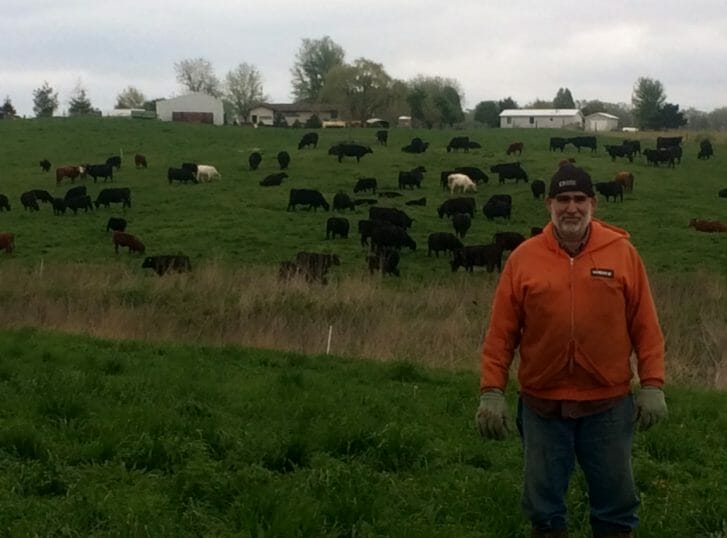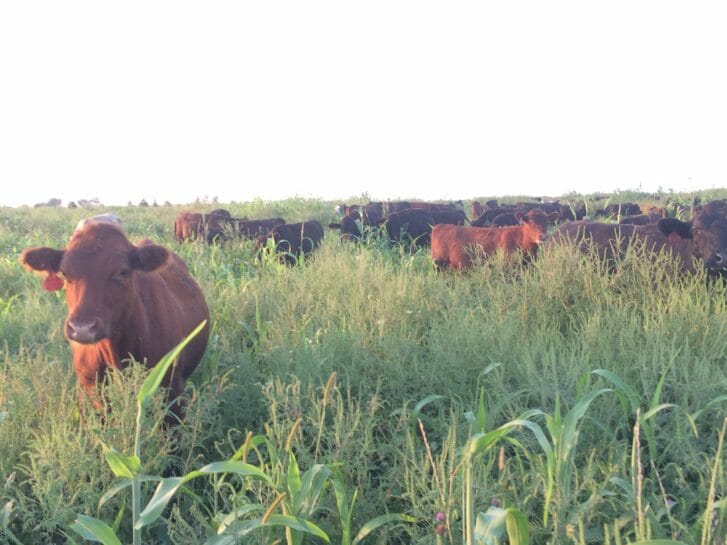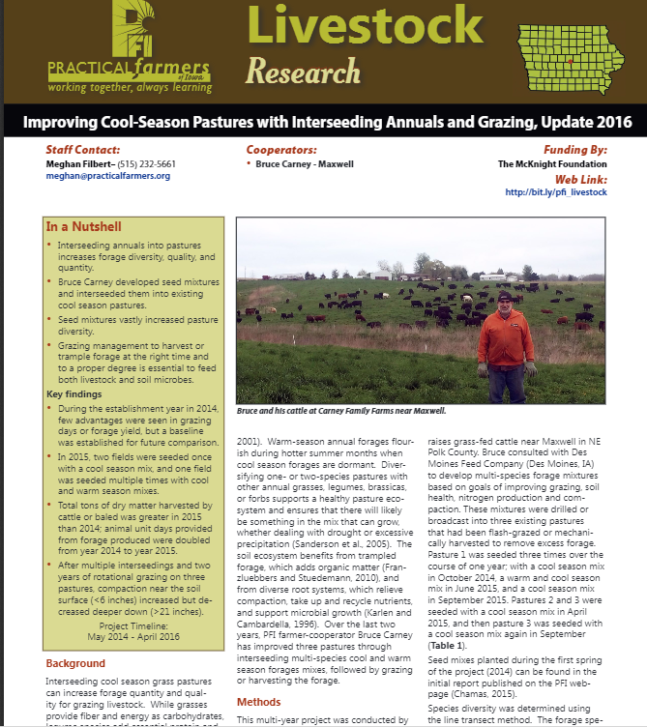Research Report: Improving Cool-Season Pastures with Interseeding Annuals and Grazing, Update 2016
For the last three years, PFI farmer and avid on-farm researcher Bruce Carney has experimented with interseeding diverse mixes of warm and cool-season forages into his perennial pastures. Bruce’s goal is twofold: to provide abundant, nutritious forage to his grass-fed beef herd year round, and to continually improve the health of his soil. In the summer of 2015, a field interseeded with soybeans, German millet, pearl millet, buckwheat, forage radish, turnips, and kale yielded 4.3 DM/tons/acre in mid-August, which Bruce baled and fed during the winter. The baleage was fed in the same field it was harvested from, to return fertility to the soil.

Bruce Carney with his herd of grass-fed cattle.

Cattle grazing a perennial pasture that has been interseeded with annual plant species.
Project Objective: To experiment with seeding multi-species forages into existing pastures and monitor performance of livestock, forage and the soil.
In a Nutshell
- Interseeding annuals into pastures increases forage diversity, quality, and quantity.
- Bruce Carney developed seed mixtures and interseeded them into existing cool season pastures.
- Seed mixtures vastly increased pasture diversity.
- Grazing management to harvest or trample forage at the right time and to a proper degree is essential to feed both livestock and soil microbes.
Key findings
- During the establishment year in 2014, few advantages were seen in grazing days or forage yield, but a baseline was established for future comparison.
- In 2015, two fields were seeded once with a cool season mix, and one field was seeded multiple times with cool and warm season mixes.
- Total tons of dry matter harvested by cattle or baled was greater in 2015 than 2014; animal unit days provided from forage produced were doubled from year 2014 to year 2015.
- After multiple interseedings and two years of rotational grazing on three pastures, compaction near the soil surface (<6 inches) increased but decreased deeper down (>21 inches).
In total, Bruce received 528.6 animal unit days (AUD)/acre from the pastures in the study, compared to 264.6 AUD/ac in 2014. Not only did forage quantity increase, but “The forage mixes I had in the pastures were higher quality for finishing grass-fed beef, which raised the total quality of my pasture, resulting in more pounds of beef produced than if I just had perennial pastures,” added Bruce.
For more detailed results and discussion, view or download the full research report on the PFI website.

